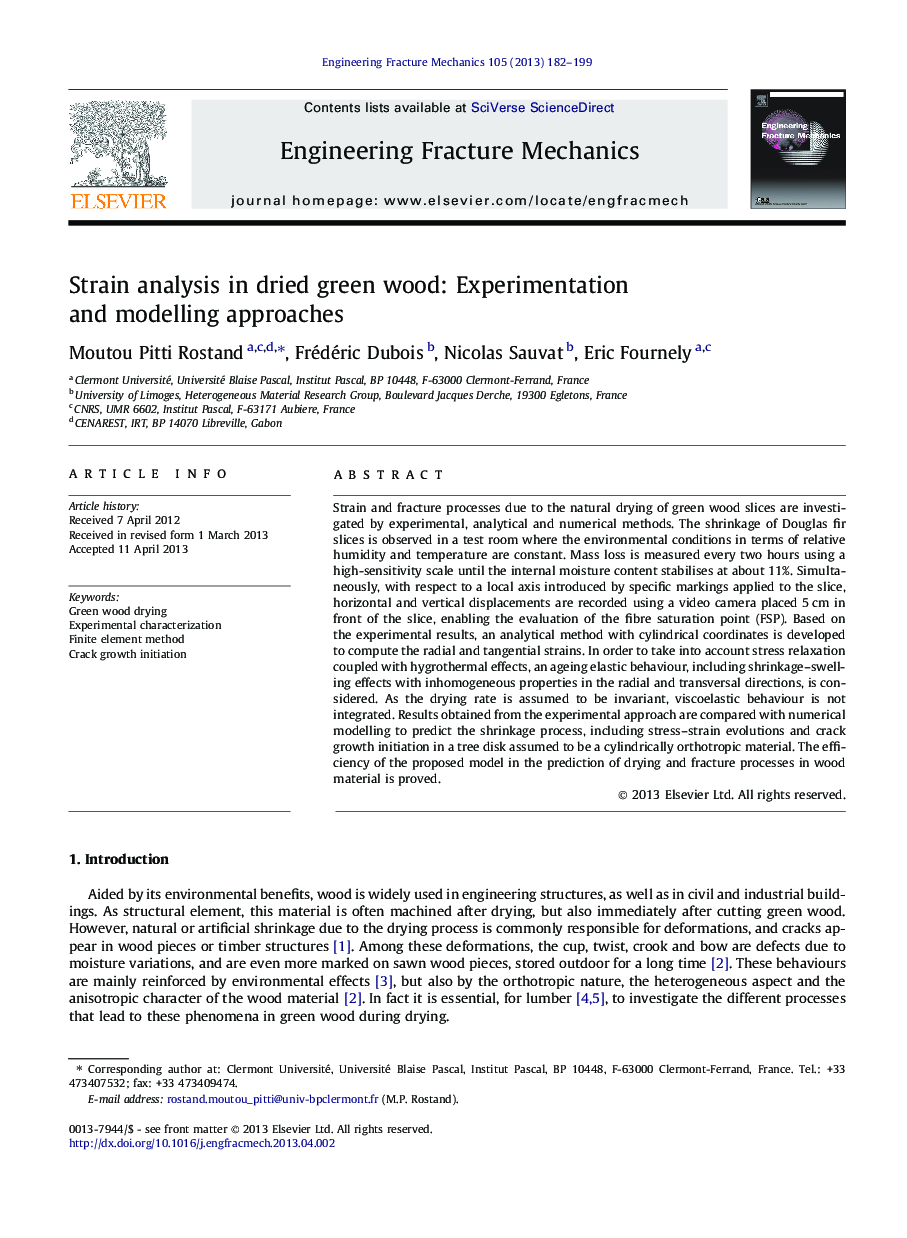| Article ID | Journal | Published Year | Pages | File Type |
|---|---|---|---|---|
| 770803 | Engineering Fracture Mechanics | 2013 | 18 Pages |
•We study the strain and fracture in a green wood slice during the drying process.•The experimental displacements are obtained according to the image analysis.•An ageing elastic finite element model, including shrinkage–swelling is developed.•The numerical and experimental results of radial and tangential strains are compared.•The model predicts efficiently the drying and the fracture process in the wood material.
Strain and fracture processes due to the natural drying of green wood slices are investigated by experimental, analytical and numerical methods. The shrinkage of Douglas fir slices is observed in a test room where the environmental conditions in terms of relative humidity and temperature are constant. Mass loss is measured every two hours using a high-sensitivity scale until the internal moisture content stabilises at about 11%. Simultaneously, with respect to a local axis introduced by specific markings applied to the slice, horizontal and vertical displacements are recorded using a video camera placed 5 cm in front of the slice, enabling the evaluation of the fibre saturation point (FSP). Based on the experimental results, an analytical method with cylindrical coordinates is developed to compute the radial and tangential strains. In order to take into account stress relaxation coupled with hygrothermal effects, an ageing elastic behaviour, including shrinkage–swelling effects with inhomogeneous properties in the radial and transversal directions, is considered. As the drying rate is assumed to be invariant, viscoelastic behaviour is not integrated. Results obtained from the experimental approach are compared with numerical modelling to predict the shrinkage process, including stress–strain evolutions and crack growth initiation in a tree disk assumed to be a cylindrically orthotropic material. The efficiency of the proposed model in the prediction of drying and fracture processes in wood material is proved.
